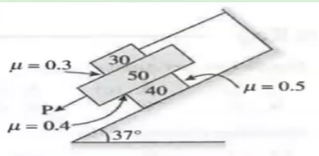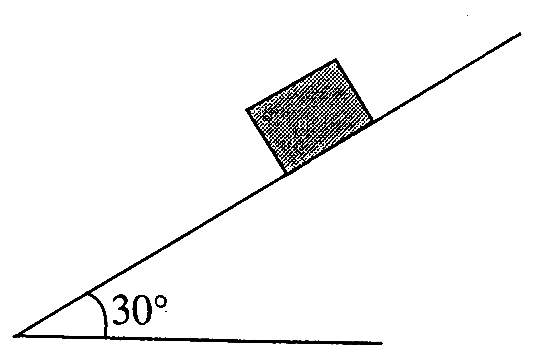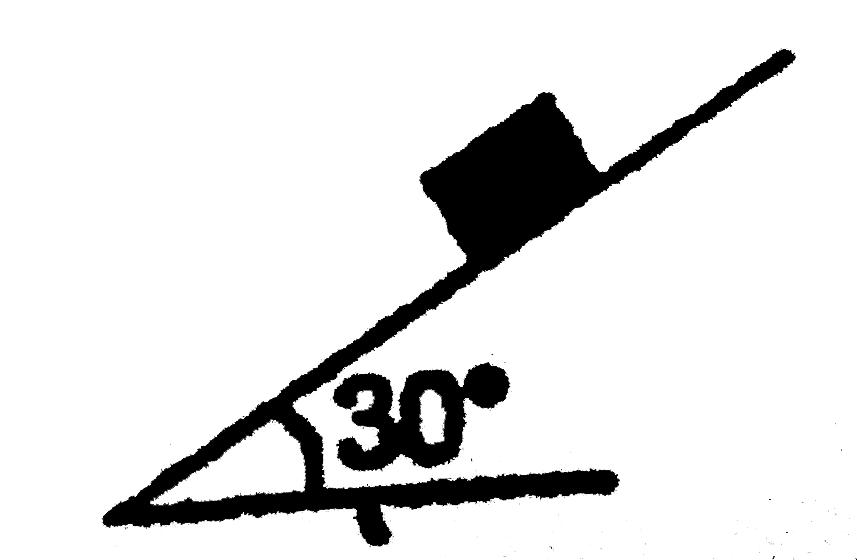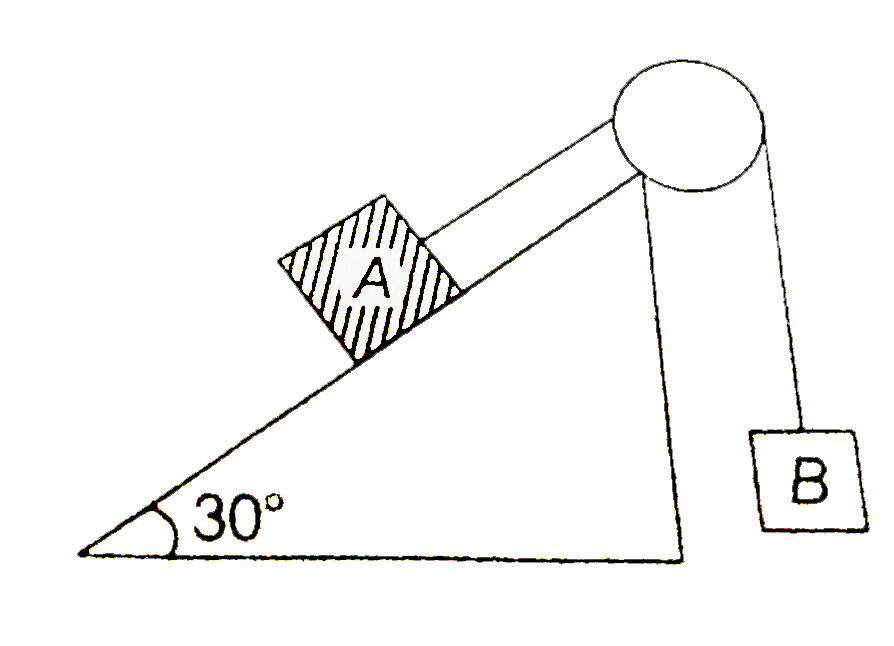
The three flat blacks in the figure are positioned on the 37 degree incline and a force parallel to the inclined plane is applied to the middle blocks. The upper blocks is prevented from moving by a wire which attaches it to the fixed support. The masses of three blocks in kg and coefficient of static friction for each of the three pairs of contact surfaces is shoen in the figure. Determine the maximum value which force P may have before slipping take place anywhere.
The correct Answer is:3
The three …………
fAbmax=0.3×30gcos37∘

fAbmax=72N
fBcmax=0.4×80gcos37∘=256N
fCmax=0.5×120gcos37∘=480N
when block 'B' is pulled two cases are possible
(1) A&C , remains stationary only 'B' lends to move downwards.
(2) B&C both moves together and there is just slipping and A&B contact and C and wedge contant
Taking case (2) Let B&C mmoves together and there is just slipping between A&B and between wedge asnd C

⇒P+40gsin37∘+50gsin37∘−72−480=0
⇒P=12N
checking friction between B&C
fBC+40gsin37∘−480=0

fBC=240
which is within limit so case is correct. so max.force for which there will be no silipping Pmax=12N the at this force both B&C tends to move together.
Topper's Solved these Questions
- TEST PAPERSBook:RESONANCE ENGLISHChapter:TEST PAPERSExercise:PART - II PHYSICS
Explore 106 Videos
- SIMPLE HARMONIC MOTION Book:RESONANCE ENGLISHChapter:SIMPLE HARMONIC MOTION Exercise:Advanced Level Problems
Explore 13 Videos
- TEST SERIESBook:RESONANCE ENGLISHChapter:TEST SERIESExercise:PHYSICS
Explore 130 Videos
Similar Questions

The three flat blockss in the figure are positioned on the 37∘ incline and a force parallel to the inclined plane is applied to the middle blocks. The upper blocks is prevented from moving by a wire which attaches it to the fixed support. The masses of three blocks in kg and coefficient of static friction for each of the three pairs of contact surfaces is shoen in the figure. Determine the maximum value which force P may have before slipping take place anywhere.
View SolutionThree blocks are placed at rest on a smooth inclined plane with force acting on m1 parallel to the inclined plane. Find the contact force between m2 and m3

View SolutionThree blocks are placed at rest on a smooth inclined plane with force acting on m1 parallel to the inclined plane. Find the contact force between m2 and m3

View SolutionA block of mass 5 kg is at rest on a rough inclined surface. If angle of inclination of plane is 60∘, then force applied by it on block is
View Solution
Figure shows a block kept on a rough inclined plane. The maximum external force down the incline for which the block remains at rest is 1 N while the maximum external force up the incline for which the block is at rest is 7 N. The coefficient of static friction μ is:
View SolutionA block of mass 5 kg rests on a inclined plane at an angle of 30∘ with the horizontal. If the block just begins to slide, then what is the coefficient of static friction between the block and the surface?
View SolutionA block of mass 5 kg rests on a inclined plane at an angle of 30∘ with the horizontal. If the block just begins to slide, then what is the coefficient of static friction between the block and the surface?
View SolutionA block of mass 5 kg rests on a inclined plane at an angle of 30∘ with the horizontal. If the block just begins to slide, then what is the coefficient of static friction between the block and the surface?
View SolutionFigure shows a block kept on a rough inclined plane. The maximum external force along the plane downwards for which the block remains at rest is 1N while the maximum external force along the incline upwards for which the block is rest is 7N. The coefficient of static friction μ is

View SolutionTwo blocks are connected over a massless pulley as shown in figure. The mass of block A is 10 kg and the coefficient of kinetic friction is 0.2 Block A sliders down the incline at constant speed. The mass of block B in kg is

View Solution

